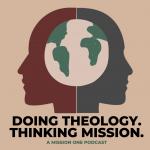 In the last post, I explained the first two stages of the contextualization process. Once again, here they are:
In the last post, I explained the first two stages of the contextualization process. Once again, here they are:
Stage One: Identify Biblical Themes
Stage Two: Interconnect Cultural Themes
Stage Three: Interpret Biblical Meaning
Stage Four: Infer Cultural Significance
This post gives an overview of the final two stages. Unfortunately, I’ll have to leave a lot of the details for you to follow up on, whether by reading One Gospel for All Nations, viewing some of my talks, or catching up on previous blog posts I’ve written on contextualization.
Stage Three: Interpret Biblical Meaning
Stage three establishes the theological foundations for our contextualization. At this point in the process, we try to discern which biblical ideas are most helpful in contextualizing the gospel. Which biblical themes and concepts convey the gospel’s message most clearly and meaningfully?
At this stage, we do exegetical contextualization. In exegetical contextualization, we use a cultural lens to interpret Scripture. Since our goal is to understand the truth in Scripture, we ultimately want an interpretive lens that is faithful to the Bible. Therefore, our approach to contextualization takes intentional measures to shape and focus the lens we use when interpreting Scripture.
Through a multilayered study of culture and the Bible, we gain a well-rounded perspective from which to approach Scripture. As one writer puts it,
“A cross-cultural reading is more objective than a monocultural reading of the biblical text.”
To be sure, culture is nothing more than a filter. The reader’s culture by itself has no real authority. Nevertheless, we humbly acknowledge that our cultural lens has an unavoidable influence on us. I specifically refer to our cultural organizing principles.
What have we achieved?
If we want to speak to the issue of ethnocentrism, we have now discerned a collection of biblical themes that will guide our reflection, teaching, and ministry practice. Our next task then is to seek out passages that discuss these topics. What do we expect to find? We will often (but not always) see how texts focusing on covenant, righteousness, circumcision, etc., are surprisingly relevant when dealing with ethnocentrism.
What would result if we had simply looked up “ethnocentrism” in a concordance or Bible dictionary? First, one won’t find any mention of the term in a concordance since the word doesn’t appear in the Bible itself.
If a dictionary even mentions the topic, the article will most likely be general, brief, and only list a select number of related verses. By contrast, the process in our contextualization model raises several possible strands of thinking, spanning a range of passages. Our attention will turn to various places of Scripture that a concordance or Bible dictionary might miss. Not only this, but we’ll arrive at answers in a way that respects the biblical context.
Stage Four: Infer Cultural Significance
The fourth stage applies a biblical perspective (gained in stage three) to a specific cultural context. Beginning with Scripture, we ask ourselves, “How does the Bible assess our culture?” Likewise, how should the Bible change the culture? In short, this stage helps us draw inferences from the text to the cultural context.
Broadly stated, we now do cultural contextualization.
In cultural contextualization, the Bible is the lens through which one interprets and assesses a culture. One moves from Scripture to culture. This fourth stage in the contextualization process uses God’s authoritative Word to build a contextualized application. Ideally, our exegetical contextualization (stage three) grounds our application. The Bible is not a mere filter; it has authority. Thus, it distinguishes right from wrong and defines what is primary and secondary.
What does this look like? Sadly, space doesn’t allow me to go into detail here. You’ll have to check out my chapter in One Gospel for All Nations to see how to work this one in practice.
* This post adapts select portions on One Gospel for All Nations













